Latest posts by (see all)
- The Best Things to Do in Tulsa - June 26, 2020
- The Most Interesting Things to Do in Springfield Mo - June 15, 2020
- Best Things to Do in Salt Lake City - May 26, 2020
- 10 Best Websites for Playing Online Games - May 22, 2020
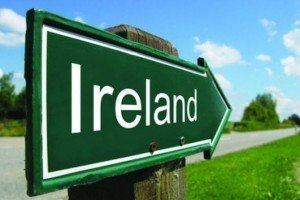 Sights of Ireland are a tribute to the Middle Age and indescribable natural wonders. Despite the image, which doesn’t suit the traditional description of the tourist region, Ireland attracts many tourists, mainly from European countries due to the fact that there are a lot of interesting places to visit in Ireland. The capital of Ireland Dublin is one of the oldest European cities. It was founded in the IX century; its city streets are full of architectural monuments, the most prominent is St. Patrick’s Cathedral. A Liffey Valley and Dublin Bay make the city more beautiful and amazing.
Sights of Ireland are a tribute to the Middle Age and indescribable natural wonders. Despite the image, which doesn’t suit the traditional description of the tourist region, Ireland attracts many tourists, mainly from European countries due to the fact that there are a lot of interesting places to visit in Ireland. The capital of Ireland Dublin is one of the oldest European cities. It was founded in the IX century; its city streets are full of architectural monuments, the most prominent is St. Patrick’s Cathedral. A Liffey Valley and Dublin Bay make the city more beautiful and amazing.
Ireland’s most famous natural attractions are charming, though rather melancholy moors and hills, among which there are a lot local legends and stories that seem alive. And the most Irish attraction – Connemara countryside located to the north-west: it is actually nothing but countless bogs, bare valleys, mountains and lakes, grass and an incredible amount of stones. This is the typical Irish landscape, and the perfect place where the old traditions of the locals are kept.
Besides attractions, Ireland attracts many tourists with the originality of local traditions and famous pubs and bars – the main meeting place of Irish people.
Contents
- Place to visit number 1: Rock of Cashel
- Place to visit number 2: Abbey of Kells
- Place to visit number 3: Old Jameson Distillery
- Place to visit number 4: Moher Cliffs
- Place to visit number 5: Christ Church Cathedral
- Place to visit number 6: Temple Bar
- Place to visit number 7: Abbey Cong
- Place to visit number 8: Burren
- Place to visit number 9: Bunratty Castle
- Place to visit number 10: National Leprechaun Museum
- Video
Place to visit number 1: Rock of Cashel
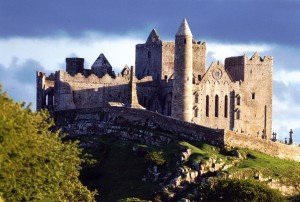 Rock of Cashel is the castle, which served as the residence of the kings of Munster. It was founded in the IV century. After the invasion of Cromwell Cashel became a symbol of resistance of the Irish people. Today, here you can see:
Rock of Cashel is the castle, which served as the residence of the kings of Munster. It was founded in the IV century. After the invasion of Cromwell Cashel became a symbol of resistance of the Irish people. Today, here you can see:
- many residential and commercial buildings,
- as well as the ruins of the cathedral.
Cashel word is anglicized version of the Irish word caiseal, which means “fortress”.
On top of the rock of Cashel Cormac’s Chapel is located. This chapel is the best preserved building of the whole cathedral complex. To the south of it there is the cathedral of St. Patrick’s Day. Cormac’s Chapel was built in 1127 by Cormac McCartney.
The chapel tower has a circular shape and is the third and last of the buildings, placed on the rock. The chapel has a pretty impressive size, the height of the
structure is 92 feet, and on the top of the tower you can see the amazing picture of the panorama of the surrounding mountains and plains.
According to legend, St. Patrick arrived in Cashel in 432 AD and christened King Eoghan, who became the first Christian ruler of Ireland. The devil was flying all the time and tried to prevent the christening. And having reached the opposite side of the mountain, the devil took a mouthful of rock and accidentally formed the rock of Cashel.
There is the Museum of the castle-rock of Cashel, which is located just before the entrance to the monument. In addition, the guides will show a variety of charts and unique documents and tell you about the history of the legendary origin of the rock of Cashel. In addition to stories, explaining the origin of the legendary rock of Cashel, there are other stories that associate this location with the advent of the Irish shamrock as a symbol. According to legend, during the cristening, St. Patrick plucked a shamrock to explain the mystery of the Trinity, and thus gave the Christian symbols of Ireland, which has become an emblem of the country.
Interesting: Ireland issued a gold coin dedicated to the rock of Cashel. Coin nominal value of EUR 20 is made of gold 999 weighing 0.5 g coin with diameter – 11 mm.
Place to visit number 2: Abbey of Kells
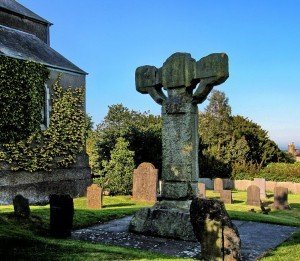 The famous Abbey of Kells, located an hour’s drive from Dublin is known worldwide from two things:
The famous Abbey of Kells, located an hour’s drive from Dublin is known worldwide from two things:
- Firstly, it is here the most of the legendary Book of Kells, this masterpiece of religious art was created. Now it is housed in Trinity College Dublin.
- Secondly, the abbey appeared in the popular cartoon “The Secret of Kells”, which was watched by the whole world both kids and adults in 2009.
Today, this former convent claims for inclusion in the World Heritage List of UNESCO. So if you have a free day, it is worth going for a walk along the ancient emerald ivy walls, enjoying the peace and tranquility of the rural corner of Ireland and then to plunge into the merry hubbub of the capital’s Temple Bar.
Interesting: Abbey is situated on the picturesquely territory of the tiny town of Kelso in Meath, and its founding date is considered to be distant 554.
Place to visit number 3: Old Jameson Distillery
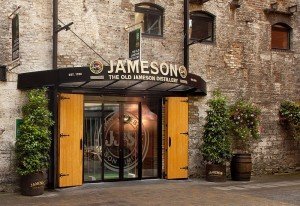 Visiting Dublin can not be imagined without a visit to the holy of holies of the capital and all over Ireland – museum the Old Jamerson Distillery. Since 1780 it was the place where Irish national drink – a great whiskey of the most famous brands in the world has been made. Visitors of the distillery can expect to have a fun and informative journey into the world of whiskey.
Visiting Dublin can not be imagined without a visit to the holy of holies of the capital and all over Ireland – museum the Old Jamerson Distillery. Since 1780 it was the place where Irish national drink – a great whiskey of the most famous brands in the world has been made. Visitors of the distillery can expect to have a fun and informative journey into the world of whiskey.
Jameson whiskey is considered one of the most popular in the world. More than two million boxes of alcoholic beverage per year is sold. The story of success began in 1780, when radical Irishman John Jameson decided to become a producer of whiskey.
In 1975, Jameson whiskey production was moved to a new plant in Cork, but the historical distillery continued its work partly as a model production, partly as a museum. At the end of the tour you will get an honorary certificate of the whiskey taster.
Museum of the Jameson distillery is located in the historic district of Smithfield in Dublin, so that the path itself here will be full of impressions of a considerable number of attractions around:
- Getting to the museum starts with the facade – it is fully retained the original shape of the 18th century.
- Next, visitors spend some time in the lobby, where everything is permeated with the atmosphere of the production and distribution of national pride of Ireland.
- During the hour tour (and visit the distillery is only possible in an organized group) you will see all the details of the process of distillation of whiskey – the sort of malt in the first stage to the stills, heaters, stills and finally containers for aging whiskey and devices for bottling the drink in branded bottles.
- Visitors are invited to get acquainted with Jameson whiskey of the different “labels” and try to define the taste of which one is the most mature.
Interesting: If you want to immerse yourself in the atmosphere of the distillery in full, welcome to the Holiday Cooper Jameson. On Thursdays and Saturdays from May to October, you will find a whiskey-party with live folk music, good solid Irish cuisine and, of course, a good portion of Jameson whiskey.
Place to visit number 4: Moher Cliffs
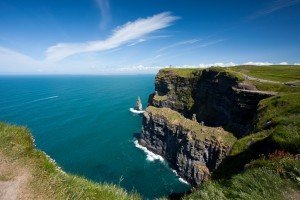 One of the main natural attractions of Ireland is the two hundred meter cliffs of Moher, stretching for 8 km. These majestic rock formations steeply go down to the Atlantic Ocean, creating a visual sense of the sheer wall. Cliffs of Moher are located in the west of the country in an area called the Burren. In fact, cliffs of Moher area known as caves, ancient tombs, castles and towers.
One of the main natural attractions of Ireland is the two hundred meter cliffs of Moher, stretching for 8 km. These majestic rock formations steeply go down to the Atlantic Ocean, creating a visual sense of the sheer wall. Cliffs of Moher are located in the west of the country in an area called the Burren. In fact, cliffs of Moher area known as caves, ancient tombs, castles and towers.
Cliffs of Moher present the oldest natural structure. Geologists refer to the period 6000 years BC. Silent rocks preserved the events that took place in Ireland for centuries: from bloody civil wars to the recognition of independence.
Why do tourists choose this destination?
Tourists who go on holiday in Dublin want to see something truly spectacular and incredible. Moher Cliffs are exactly such place. Prepare for:
- a dizzying view from the two hundred meter height over the Atlantic Ocean and Galway Bay,
- breathtaking scenery,
- great Aran Islands.
At the top of the cliffs of Moher there is an ancient stone lookout tower O’Brien, which was built in 1835. Paying a few EUR, you can climb it up. From there you will be able to see even more beautiful view. Romantics and lovers of dizzying beauty types are recommended to visit Cliffs of Moher.
Interesting: Apart from the rocks, on the plateau, there are other attractions. For example, Dunguaire Castle, located on the Bay of Gelouey. There are costume balls, exactly the same as in the Middle Ages.
Place to visit number 5: Christ Church Cathedral
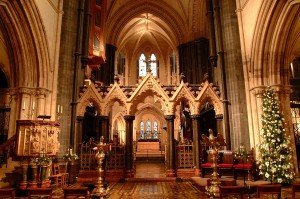 Main Cathedral in Dublin and one of the three ancient cathedrals of the city can boast an exceptional age: it was founded already in 1031 by King Viking Sitrigom. Cathedral of Christ is worshiped by both Catholic and Anglican that is the best evidence of the temple’s exclusivity. But tourists are attracted here not by the dust of centuries’ history but with the modernity of the merry Dublin: among the
Main Cathedral in Dublin and one of the three ancient cathedrals of the city can boast an exceptional age: it was founded already in 1031 by King Viking Sitrigom. Cathedral of Christ is worshiped by both Catholic and Anglican that is the best evidence of the temple’s exclusivity. But tourists are attracted here not by the dust of centuries’ history but with the modernity of the merry Dublin: among the
exhibits of the museum you can see a mummy of a rat and a cat preserved in the musical organ a couple of centuries ago.
Start your acquaintance with the cathedral from the main entrance. Its facade was re-lined in 1875, but Norman and Anglican architectural elements can be clearly traced. You can see the ruins of the 13th century and the home of a priest.
What to see here:
- Inside there is the tomb of the knight Strongbow of 12th century with the painstaking depiction of a total of knightly weapons. The statue is likely to have cavities intended for the disposal of the internal organs of the man.
- The cross passages and choruses – the oldest part of the cathedral, dating back to the 12-13 centuries.
- In the south aisle, you can see the chapel of St. Lawrence with valuable relic – embalmed heart of a saint. Ceramic tiles on the floor of the original chapel are from the 13th century.
- Then you should definitely go to the underground part of the Cathedral – the crypt. This is the oldest building in the whole Dublin, referring to the beginning of the 12th century.
- Permanent exhibition “Treasures of the Cathedral of Christ” presents the artifacts associated with the worship in the temple: manuscripts, candlesticks and other church furnishings.
Interesting: The most amazing showpiece in the Cathedral – naturally mummified rat and cat once chased it, extracted from the cathedral organ after its cleaning in 1860.
Place to visit number 6: Temple Bar
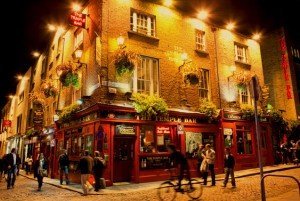 Temple Bar is the night area of Dublin. Here it is always crowded. And this is because this place has been chosen by the local youth for the presence of bars, pubs, restaurants and nightclubs. It is no wonder that tourists too like Temple Bar! Almost every door in the area of Temple Bar opens in the entertainment area where Guinness flows like water. But do not think that the second part of the name means Temple Bar is a snack bar. In fact, the area was called because the possession of Sir Temple stood on the river bank. And the word “barr” is translated as “steep bank.” Therefore, the name is quite decent. And the place itself is decent. Of course, here, as in any street of any big city,
Temple Bar is the night area of Dublin. Here it is always crowded. And this is because this place has been chosen by the local youth for the presence of bars, pubs, restaurants and nightclubs. It is no wonder that tourists too like Temple Bar! Almost every door in the area of Temple Bar opens in the entertainment area where Guinness flows like water. But do not think that the second part of the name means Temple Bar is a snack bar. In fact, the area was called because the possession of Sir Temple stood on the river bank. And the word “barr” is translated as “steep bank.” Therefore, the name is quite decent. And the place itself is decent. Of course, here, as in any street of any big city,
you can find the suspicious type, but around it will be quite a lot of friendly local people and tourists. Therefore, even in the night there is nothing to fear in this part of Dublin!
The most popular bars here:
- The Temple Bar,
- The Quais,
- The Auld Dub.
There are many people in each of them, regardless of the day of the week.
Interesting: Closer to the weekend and in the evenings there are often musicians playing and any visitor can enjoy singing as well.
Place to visit number 7: Abbey Cong
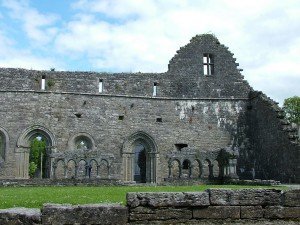 Abbey Cong is located in the eponymous village in Ireland, it can boast with two venerable landmarks:
Abbey Cong is located in the eponymous village in Ireland, it can boast with two venerable landmarks:
- The first one is for all fans of knightly and romantic, it is a pseudo-medieval castle, built by the successor of glorious Guinness, Lord Ardilion. Now it is the first-class hotel.
- The second point of interest is the ancient Abbey, erected 1,400 years ago, the founder of which was the famous Irish Saint Fehin.
If you walk to the south of the abbey, you can enjoy the sight of the magnificent castle Ashford, which was built in 1870 in the style of Gothic Revival Lord Ardilonom Guinness. Today it is one of the most luxurious hotels in Ireland, so it is worth staying here for a couple of nights. Firstly, many people believe that this is the most beautiful country castle, even a pseudo-vintage. Secondly, the hotel gives its guests stunning views of the lake and the abbey, as well as the opportunity to wander through the interior, where once the Oscar-winning film “The Quiet Man” was filmed. Moreover, within the walls of the hotel there is still a fan club of the film «Quiet Man Fan Club» and there are guided tours under the same name.
Finally, if you are here, it would be unforgivable to miss the last local landmark – the Dry Channel. Until now, at the bottom of a dried-up channel you can see the stone bridges and gateways.
Interesting: Dug during the terrible drought and the ensuing famine of 1845-1848 the Dry Channel was not able to perform its function and help the poor locals.
Place to visit number 8: Burren
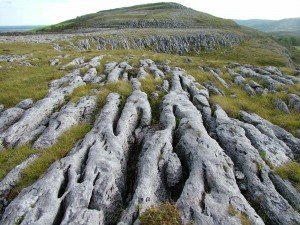 Burren is a national park and the plateau in Ireland located in the western part. The nearest large settlements are:
Burren is a national park and the plateau in Ireland located in the western part. The nearest large settlements are:
- Galway about 60 km north,
- Limerick at the same distance to the south.
This place is really beautiful for those who like draughty plateau rocky martian landscape and underground caves. In winter, some of the local scenery is enough to shoot a dozen sci-fi movies. There are underground caves with ponds and giant stalactites almost 10-meter length. A summer Burr ecosystem amazes tourists with its anomalous variety: arctic and alpine plants side by side with the Mediterranean, lichens and mosses cover the rocks.
Surprisingly, in Burrene you can see pasture and they are suitable for use all year round. This is because the limestone slabs are almost a kilometer thick in the summer heat so that all winter, they gradually are cooling down, allowing the grass to keep them green. The feature of this place was appreciated by prehistoric people. In Burrene you can stumble upon a lot of megalithic graves and dolmens of pre-Christian and pre-Celtic period.
The Burren area is about 250 square km and a big part of it is a national park in the south-east area of 1,500 hectares. Almost all of the Burren is covered with the sandstone of the early Carboniferous, and this breed is about 350 million years ago formed the quaint layers.
Interesting: So far, it is possible to see traces of corals, aquatic plants and ammonites. In Burren you can admire one of the best examples of ice-karst landscape in the world.
Place to visit number 9: Bunratty Castle
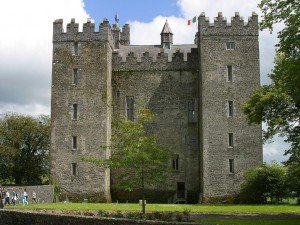 This is a wonderful treasure of Ireland, which is the envy of the whole world. You will be impressed not only by the perfectly preserved medieval walls of the citadel, but first of all the atmosphere of 15-16 centuries.
This is a wonderful treasure of Ireland, which is the envy of the whole world. You will be impressed not only by the perfectly preserved medieval walls of the citadel, but first of all the atmosphere of 15-16 centuries.
Some facts about Bunratty Castle:
- There is an exceptionally picturesque ethnographic park illustrating the life of the country of the 19th century.
- Bunratty Castle was built back in 1425, but since that day there is almost nothing left: during the Irish War citadel was destroyed and re-established only in 1646. It is this date can be ascribed to the “lion’s share of buildings on the grounds of the castle.
- Despite the fact that the owners of Bunratty changed faster than the seasons of the year, the estate produces a rather holistic impression – both architecture and interiors.
By the way, the last owners left the castle in 1804 and since ancient times until the middle of the 20th century Bunratty was in decline.
Interesting: Large-scale restoration ended in 1954 and Bunratty opened to the world, which everybody could see in the 16th century.
Place to visit number 10: National Leprechaun Museum
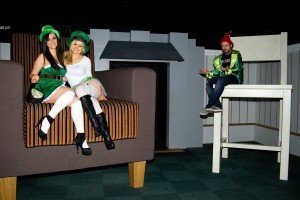 It was opened just four years ago, but immediately won the love of the local people and tourists. It revived the ancient Irish legend of the little men in green clothes that protect their pots of gold. As conceived by the creators of the museum visitor should not just learn about leprechauns but become one of them with the help of the giant furniture, a real corner of the forest with a well and an amazing rainbow, opening the way to the coveted golden pots.
It was opened just four years ago, but immediately won the love of the local people and tourists. It revived the ancient Irish legend of the little men in green clothes that protect their pots of gold. As conceived by the creators of the museum visitor should not just learn about leprechauns but become one of them with the help of the giant furniture, a real corner of the forest with a well and an amazing rainbow, opening the way to the coveted golden pots.
Everything here is created so that visitors are able to try the role of a leprechaun:
- For a start they are introduced to Irish folklore. You will be told who the leprechauns are and what they are famous for.
- The tour continues in the “historic” the museum, where you can learn how leprechauns topic became widespread in popular culture, such as in the popular cartoons.
- After that you will be able to get the so-called leprechaun-experience: you will find yourself in a room with giant furniture, try to jump on a chair and stay at the table.
Interesting: The museum tour ends in the forest where you can go down into the well and follow the rainbow to the golden treasure.